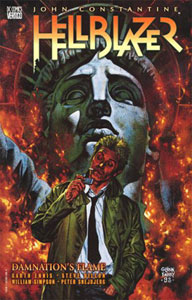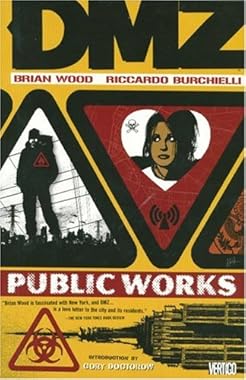
Hellblazer - Rake At The Gates of Hell
By Garth Ennis, Steve Dillon
Not with a bang, but with a whimper.
Throughout Garth Ennis' stellar run on Hellblazer, he spent a lot of time building up a solid, ever-evolving story. Threw together many elements and made them work. Built towards what looked to be a remarkable confrontation with the devil himself. How would Constantine get out of the jam he was in? What amazing plan would he hatch? Could he once again pull the figurative rabbit out of the hat? It was thrilling to imagine the ways in which this could have played out.
Reading the finished product was less thrilling than the imagining.
Rake At The Gates Of Hell is a solid, if unremarkable, final story arc, bringing to a close Ennis' (usually) fantastic Hellblazer run. I only wish it could have finished as strongly as it started, because when this run was good, it was OUTSTANDING. This, though, was just pretty good ... and that's it.
Sure, the writing remained crisp and lively. Yes, Steve Dillon's art continued to be beautiful in its simplicity and top-shelf in its storytelling.
Just didn't have the rousing finish a reader would hope to see, is all.
Oh yeah, and whose idea was it to cap things off with a lengthy, tedious double issue of talk, talk, talk, none of which had anything to do with Constantine or the core story? Stupid, stupid, stupid to place this special issue at the end of this volume. Bad call by DC's graphic novel editorial type people.
An earlier version of this review was originally posted at IMWAN.com.
Read my regular, everything-and-anything (usually on writing and music) blog right over here.











